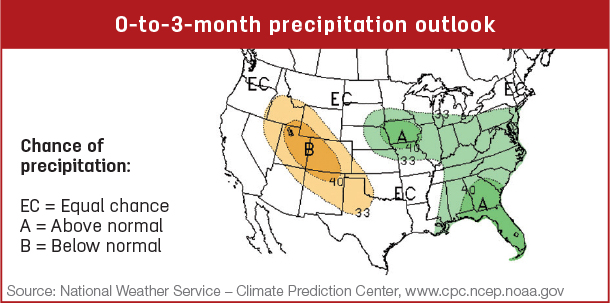This month, a few more topics will be addressed when too much of something can lead to unnecessary expenses, reduced performance or both.
The south-central region varies tremendously in annual rainfall and forage production potential – and thus stocking rates.
As such, the appropriate level of milk production for an environment is different across the region.
Having cows that produce too much milk can be a problem in all environments, as it can lead to lower body condition scores, which reduce pregnancy rates. In lower-rainfall environments, cows that produce less milk are needed. In order to maximize profits, it is critical to select cows with the right amount of milk production for the environment. Cows that produce too much milk or too little milk for the environment will reduce profits.

When retaining replacement heifers, selecting bulls with more growth (i.e., higher weaning or yearling weight EPDs) often leads to increased mature weight of cows. Mature weight can be loosely defined as the weight of a cow that is 5 years old or older, is in a body condition score of 5 and is open or in the first couple months of gestation. Consequently, selecting bulls with moderate growth is often best when replacement heifers will be kept.
Cows that are too large for the environment are harder to maintain, which leads to reduced performance, increased feeding and reduced profits.
As with milk production, the appropriate mature weight varies among environments and is different across the region. Generally speaking, decreasing mature size with decreasing annual rainfall is beneficial.
The number of cows on an operation is a perfect example when more is not always better. In many situations, more profit per acre and for the operation can be achieved by running fewer cows. If the ranch is overstocked, it leads to overgrazing, which reduces forage production and results in cows with lower body condition scores. Lower body condition scores result in lower pregnancy rates and lower weaning weights. Thin cows will not produce as much milk as cows in good condition, and calves are grazing lower-quality forages because they can’t be as selective.
Additionally, when an operation is stocked too heavily, it leads to feeding more hay and supplements. ![]()

-
Jason Banta
- Associate Professor and Extension Beef Cattle Specialist
- Texas A&M University
- Email Jason Banta








